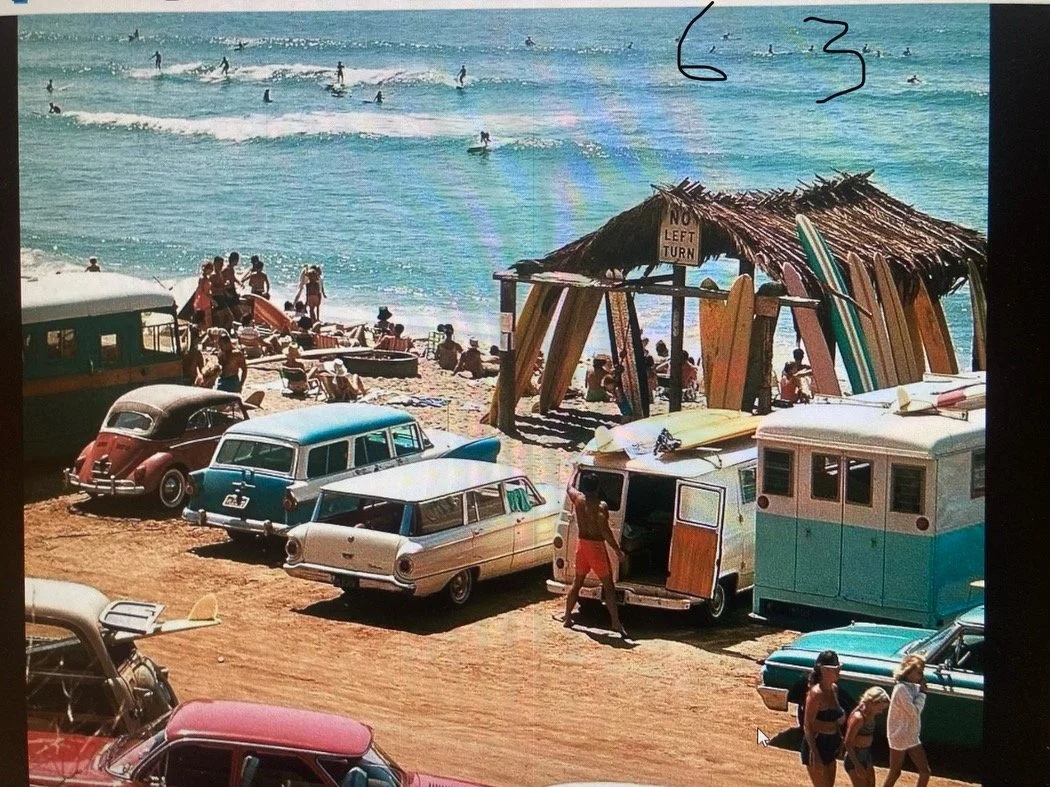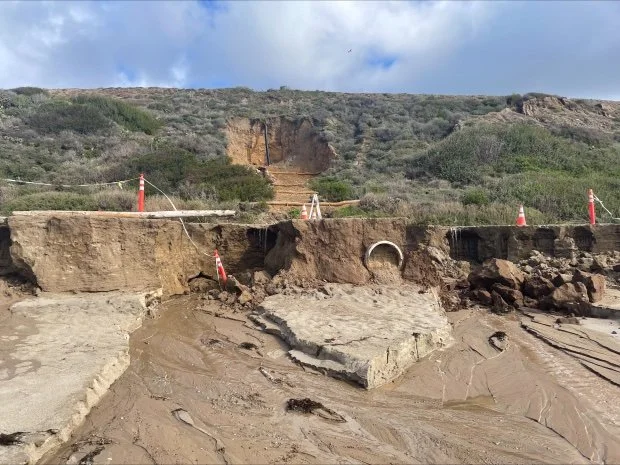
San Onofre Beach - California
The Changing Tide-the effect of human land change on coastal erosion of San Onofre Beach
Scroll ↓
Bobby Lombard in his crib alongside his Mother on a hot sunny day at San Onofre Beach
The San Onofre Surfing club has been utilizing the natural power of the San Onofre Surfing Beach for over 70 years.
Bobby Lombard grew up at this beach. He proudly shows a photo of him as a baby, playing in his crib on the San Onofre shores while his mother sits beside him, smiling for the picture.
San Onofre Surfing Beach, 1963
The members state that the shape of the beach hasn’t changed much overtime, and most of the physical changes of the beach are due to human influence on land use. In 1964, Southern California Edison started construction on a nuclear power plant that sits on the bluff of San Onofre State Beach. During its construction a seawall was built to protect the plant from the erosion action of tides and waves.The sand flow from this plant extended the beach about 50 yards, says Lombard. Once the construction was completed, the seawall was demolished, and the beach returned to its original size after many years.
Bobby's passion for this beach, along with his family's long legacy of surfing the waves and forming connections with strangers, is palpable. The San Onofre Surfing Club has nurtured the legacy that exists at San Onofre Surfing Beach.
Current sitting president Scott Cuda describes the culture of the club,“For me, the legacy is family, friends, you know, volleyball, the surf. The fact that it's basically an untouched stretch of beach for eons now. And my family's been raised here and I can't think of any other….So it's got a special place in my heart.”
The club graciously gifted me a copy of their 50th anniversary book. Running through the pages you get a sense of just how long their legacy has been. The old VW buses, wood boards, and vintage swimsuits that dawn the beginning of California surf culture.
Photo Courtesy: Wikimedia Commons
The recent erosion at San Onofre Beach is believed to be a direct result of vulnerabilities due to not only the strong tide but caused by faulty drainage systems meant to keep the bluff above from eroding. The drainage system, which has directed water down to an outlet near the ocean for decades, experienced a break. The most recent storm exacerbated the issue, causing part of the dirt road to wash away. While factors like large surf and high tides were not significant contributors, the focus is on the impact of drainage on road erosion. About 85% of the California coast experiences active erosion due to human land use and natural causes.
In theory, the system was designed to mitigate bluff erosion by redirecting water. However, State Parks environmental scientists Riley Pratt noted that it proved inadequate against the substantial water volumes generated by recent storms.
According to an article by the Orange County Register, State Parks and Camp Pendleton environmental teams met to address issues with the drainage pipes and road damage. The repairs are anticipated to be a collaborative effort, but progress may be delayed as there is still the need to navigate permitting procedures.
The San Onofre Surfing Club and its members are committed to preserving the beach in its most natural state, closely resembling that to the days of the club's inception. As you stroll along the shore, tree trunks serve as parking block barricades instead of concrete and rocky shores act as natural barriers. The dog patch, volleyball courts, and old man shack proudly stand, evoking the rich history that has been made and the history yet to unfold.
Photo Courtesy: The Orange County Register
Learn more about the San Onofre Surfing Club at their website: https://sanonofresurfingclub.org/ and Follow them on Instagram @Sanonofresurfingclub
Written by Mona Patterson
References:
https://www.ocregister.com/2024/02/10/washed-out-road-adds-to-concerns-about-san-onofre-beach/
https://www.tiktok.com/@djdrock10/video/733191016551360439
https://en.wikipedia.org/wiki/San_Onofre_Nuclear_Generating_Station


